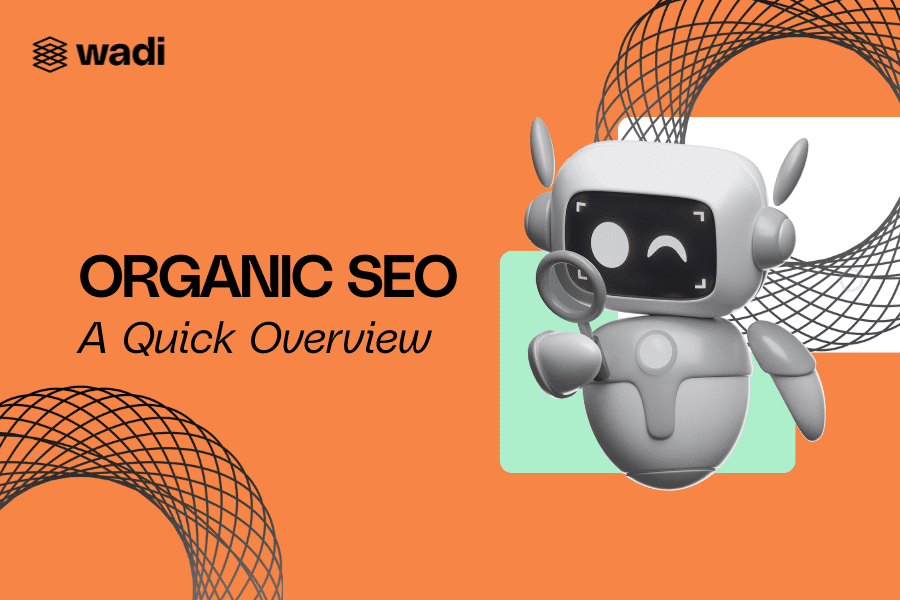Table of Contents
ToggleWhat You Will Learn:
How marketing channels become prime targets for cybercrime through bots or fake accounts.
Cybersecurity has been an increasing priority for companies worldwide. Data leaks, hacks, phishing, and other cybercrimes cost businesses $4.35 million on average.
Although cybercrimes are expected to cost the world more than $10.5 trillion annually by 2025, the growing cybersecurity industry is helping defend companies of all sizes and industries against these threats.
As more and more organizations protect themselves with cloud security, app security, network security, etc., cybercriminals look for new potential weak points in company security. Experts have noticed that many hackers target company sales and marketing funnels. This is likely because marketing teams have not prioritized security until recently, and some traditional cybersecurity measures can actually disrupt the customer experience.
Therefore, because this business area is often left unprotected, it can be an easy target for fraudsters and bad actors to exploit.
Below, we’ll discuss the key marketing channels vulnerable to malicious traffic and how marketers can prevent this new strain of cybercrime.
Advertisements Can Drive Malicious Clicks to Sites
Digital advertisements are the prominent advertising vehicle for companies of all sizes and industries. Paid-per-click (PPC) ads are a common digital advertising strategy where companies only pay when users click on their advertisement and visit the company website.
While PPC ads are a cost-effective way to target consumers, they are prime targets for cybercriminals. Hackers using click farms can create bots that click on company advertisements thousands of times, allowing competitors to drain budgets. These attacks can happen at any time and can be challenging to track.
Pro-Tip: Use click fraud detection tools to prevent bot-driven clicks from draining advertising budgets.
Fortunately, companies can now utilize PPC click protection fraud software to detect, protect, and eliminate fraudulent clicks from costing companies thousands or millions of dollars.

Polluted Audiences Can Remarket to Bots
While some bots can be helpful for digital advertisers, in most cases, they can wreak havoc on digital marketing campaigns. Furthermore, even so-called ‘good bots’ like innocuous content indexing crawlers cannot convert to real paying customers and should therefore be excluded from the marketing funnel. Additionally, hundreds of services worldwide allow companies to buy fake bot accounts to boost follower numbers and help company pages look more legitimate. But most companies avoid doing this because social media platforms can spot bot account activity and will deprioritize and punish accounts with large bot followings.
Cybercriminals can use this to their advantage by polluting company audiences with bot accounts. Unfortunately, this issue can quickly compound, creating a dire situation.
Lookalike audiences built on campaigns infected with fake traffic and bot accounts will attract more bot accounts. As a company’s bot account following grows, it can be near impossible to reach target consumers before removing all the bot account followers. Not only does this cost time and money, but the company risks eliminating legitimate followers while the platform deranks its page.
Organizations can protect themselves from harmful bot activity by using specialized tools and software. Advanced bot detection solutions allow companies to detect and prevent bot activity from polluting company social media audiences.

Promotions Can Attract Those Looking to Exploit Giveaways
Promotions can be a powerful marketing tool, but users can quickly take advantage without the proper safeguards. Bad actors commonly look for discounts, coupons, and other deals and create fake accounts to take advantage of company promotions.
Most famously, PayPal struggled to reign in fake accounts after a series of promotions that incentivized new account creation. Users were creating multiple accounts to cash in on free $5 to $10 deposits provided by the company. It was found that more than 4.5 million accounts were created under false pretenses to cash in on the promotion.
Companies can use tactics like two-factor authentication to ensure that users can only enjoy the promotion once.
Affiliates Looking for Quick Wins Can Send Bad Traffic to Site
Affiliate marketing is another area that creates vulnerabilities for companies. Many brands work with affiliate marketers and partnering businesses to help drive traffic to their websites. However, some affiliate markers will enlist suspicious methods to drive high volumes of clicks to earn more money.
Through click farms, bots, and other methods, cybercriminals can fake high-intent users visiting a company’s website and still reap the rewards.
By analyzing incoming web traffic, companies can detect and prevent click fraud from affiliate marketing. For instance, users with abnormally low session times and cookie files are likely bots and not people. Additionally, when companies notice that they’re receiving high click-through or bounce rates, it can be a sign that bot activity is skewing the numbers.
Pro Tip: Watch for suspicious patterns in affiliate marketing traffic to detect click fraud and low-quality leads.
Using tools and regularly monitoring affiliate marketing campaigns, brands can ensure their marketing dollars aren’t wasted.
Certain Tags and Plugins Can Create Vulnerabilities on the Site
Digital advertisers and web developers can create vulnerabilities in their site infrastructure without realizing it. Some marketing plugins companies add to a site, or the tags they add to the tag manager, can put the site at risk for certain types of attacks, reducing site security.
The best way to prevent these vulnerabilities is by researching plugins and tags before integrating them into site infrastructure. Protocols and functionalities are constantly being upgraded to defend against the newest cyber-attacks, and older plugins or tags may be too weak.
Pro Tip: Ensure all marketing tools, plugins, and site tags are secure to prevent vulnerabilities that could be exploited by attackers.
How Can Businesses Prepare?
Companies of all sizes and industries should prepare for cybercrimes. This means that company leaders should understand the potential risks, what solutions to implement, and that cybersecurity checks are completed.
While every business should prioritize cybersecurity, creating defenses to prevent cybercrime will look different for every organization. Organizations should work closely with cybersecurity experts to ensure they’re using the most modern technology applicable to their situation.
As cybersecurity technology advances, so do the tools and strategies available for cybercriminals. With cybercrimes expected to cost companies trillions of dollars worldwide this year, every business should ask themselves if their company is protected.
Implementing modern and powerful cybersecurity solutions is the best way to protect your profits, assets, and business growth.
Key Takeaways:
- Marketing channels, including PPC ads, social media, promotions, and affiliate programs, are prime targets for cybercriminals due to security gaps in sales funnels.
- Fraudsters exploit vulnerable GTM strategies, including bot traffic, fake accounts, and click fraud, which can drain budgets and damage brand integrity.
- To protect GTM efforts, businesses need advanced tools like click fraud detection, bot prevention, and secure plugins to safeguard marketing initiatives.






